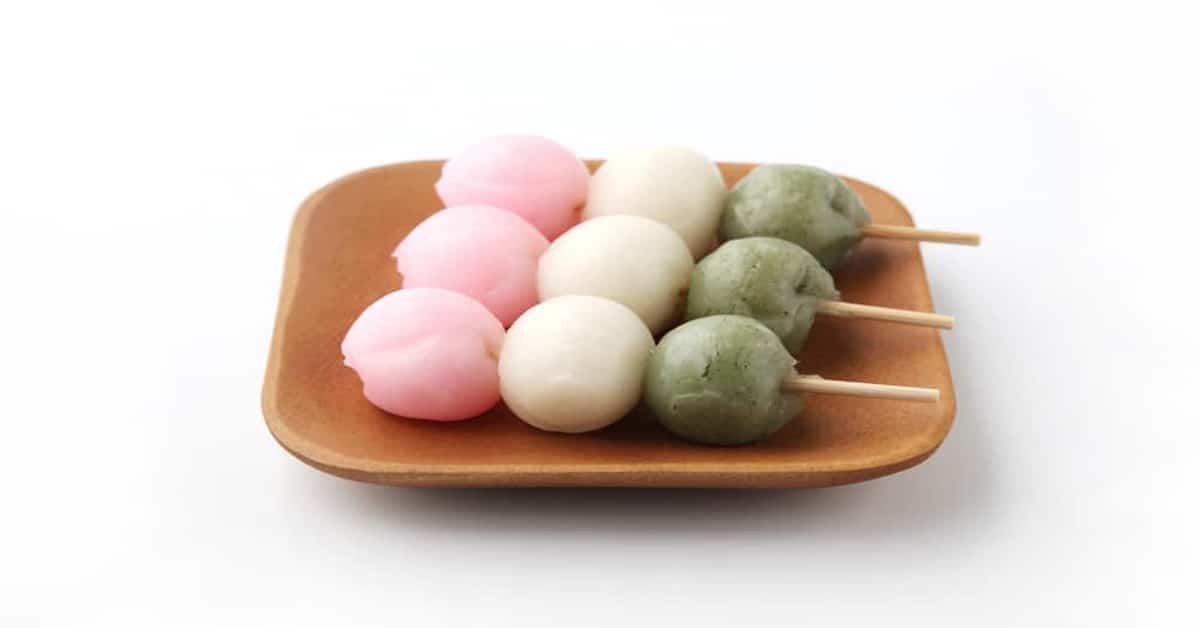Japanese Candy – 21 Fancy Sweets & Fascinating Facts
Japanese candy has been an important part of Japanese culture since ancient times. They are usually easily distinguishable from other nations’ treats because of their visual beauty and special aesthetics. Japanese confectionery is a piece of art as well as very delicious in flavor to satisfy your eyes as well as your mouth. It takes a lot of practice and professionalism to master the Japanese candy-making process.
Japanese treats are usually very beautiful and take the form of elements from nature. You may have seen these beautiful sweets in the Japanese sections of the supermarket, as they are very easy to see with one’s eye. Japanese candy usually resembles something from nature, like flowers, leaves, fruits, etc. It is mostly made from mochi, bean paste, or a jelly-like substance.
Please leave a review or any memories of this snack in the comments at the bottom of this page. Thank you!
Starting from ancient times, Japan has created a very long and important history of candy making. Candy has become part of Japan’s everyday life and an essential symbol of some rituals like tea drinking. It has become an essential part of their culture and an important creation to share with the rest of the world.
Japanese Candy Names
- Hi-Chew
- Pocky
- Apollo
- Milk Candy
- Nobel Super Sour Candy
- Classic Guava Hard Candy
- Puccho Chewy Candy
- Kit Kat
- Konpeitō
- Super Lemon Candy
- Black Thunder
- Ramune Candy
- Meiji Almond Chocolate Snack
- Meiji Kaju Gummy Candy
- Fujiya Milky Candies
- Matcha Green Tea Raw Chocolate
- Tirol Chocolate
- Caplico
- Ichigo Daifuku
- Meika Hiyoko
- Umeboshi Plum Candy
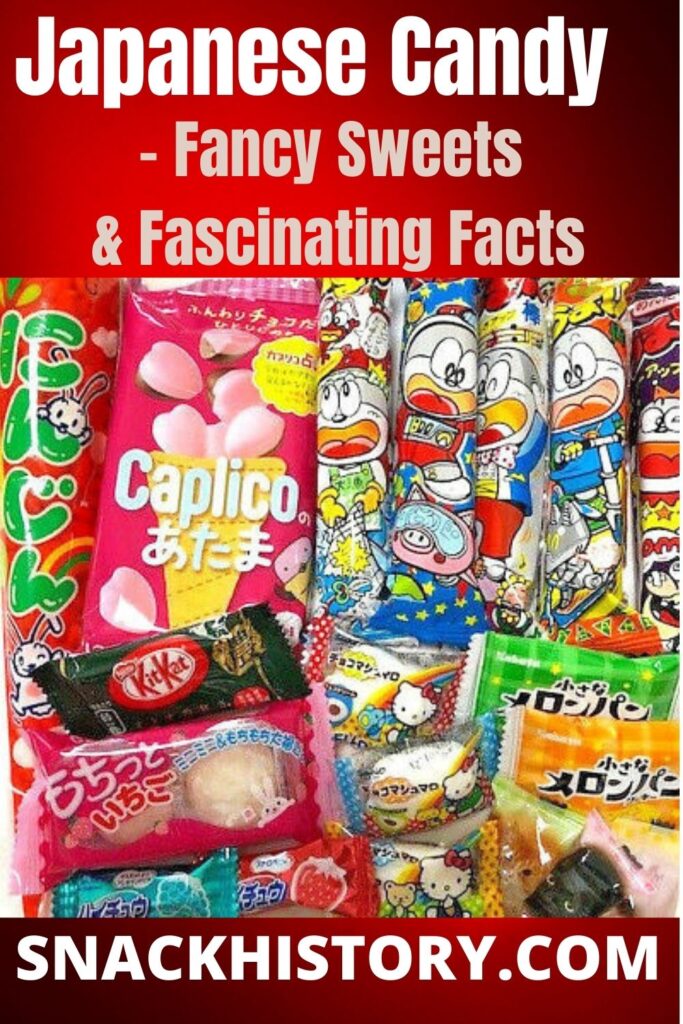
Most Popular Signature Japanese Candy
It is hard to say how many types of Japanese candy can be found in each category. Starting with chocolate bars and finishing with hard candy, Japan offers dozens and dozens of candy varieties that are fun and delicious at the same time.
Japan is famous for creating candies that are unusual in flavor and usually very colorful, which makes them more appealing and especially desirable for children. It would be true if we said that Japanese candy is out of this world, and the Japanese confectionery techniques have developed way further than in the rest of the world.
Japan is also very famous for creating special editions of popular candies. Japanese confectioners get crazy when it comes to creating something extraordinary. You can only find green tea or mocha-flavored sweets in Japan. It’s difficult not to agree that such tastes are worth a shot at least once.
Here are the most popular Japanese candy, that you need to try as soon as possible.
Buy Japanese Candy Online
1. Hi-Chew
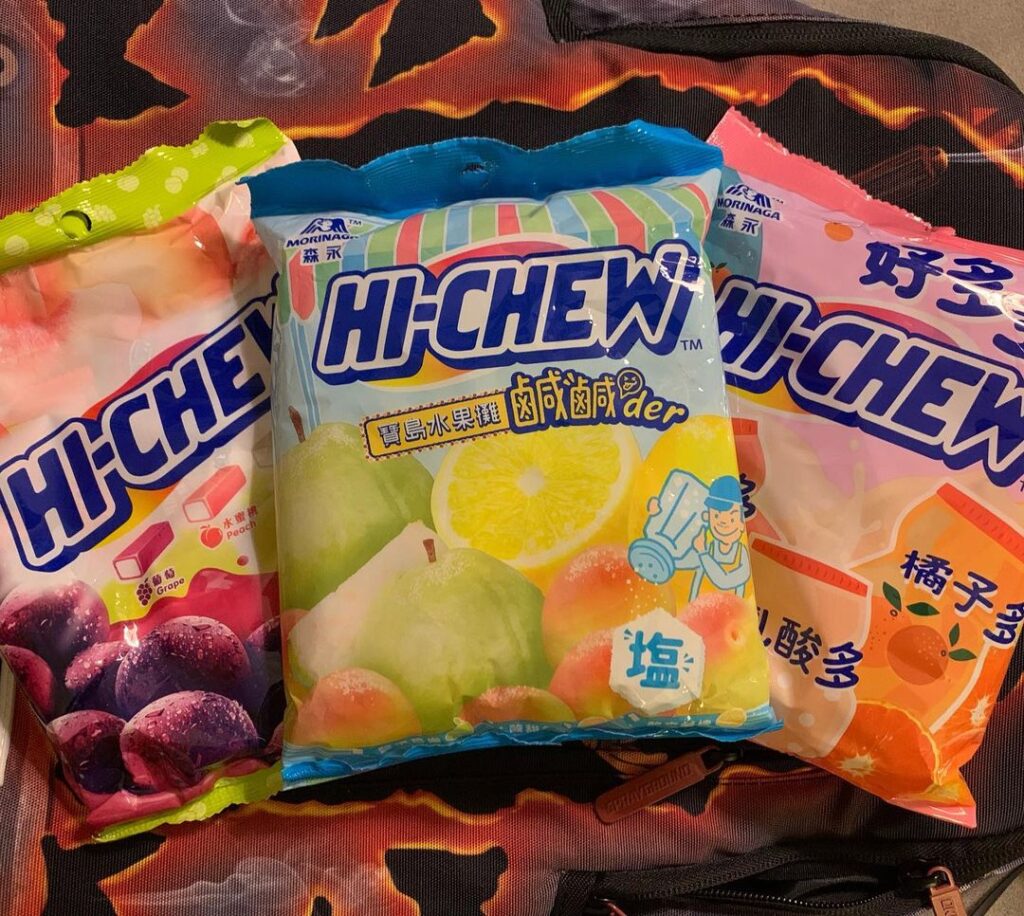
This soft, chewy candy was first released in 1975. Hi-Chew has become the most popular chewy candy in Japan. It was created by Taichiro Morinaga, who was inspired to create an edible type of chewing gum. Its texture is similar to some other popular chewy candies, such as Starburst, Laffy Taffy, or SweeTarts.
Hi-Chew consists of an outer white coating with a flavored and colorful interior, which usually tastes like fruit. There are fourteen flavors of Hi-Chew available in the United States. You can find it in most big supermarkets and at popular places like Disney World.
2. Pocky
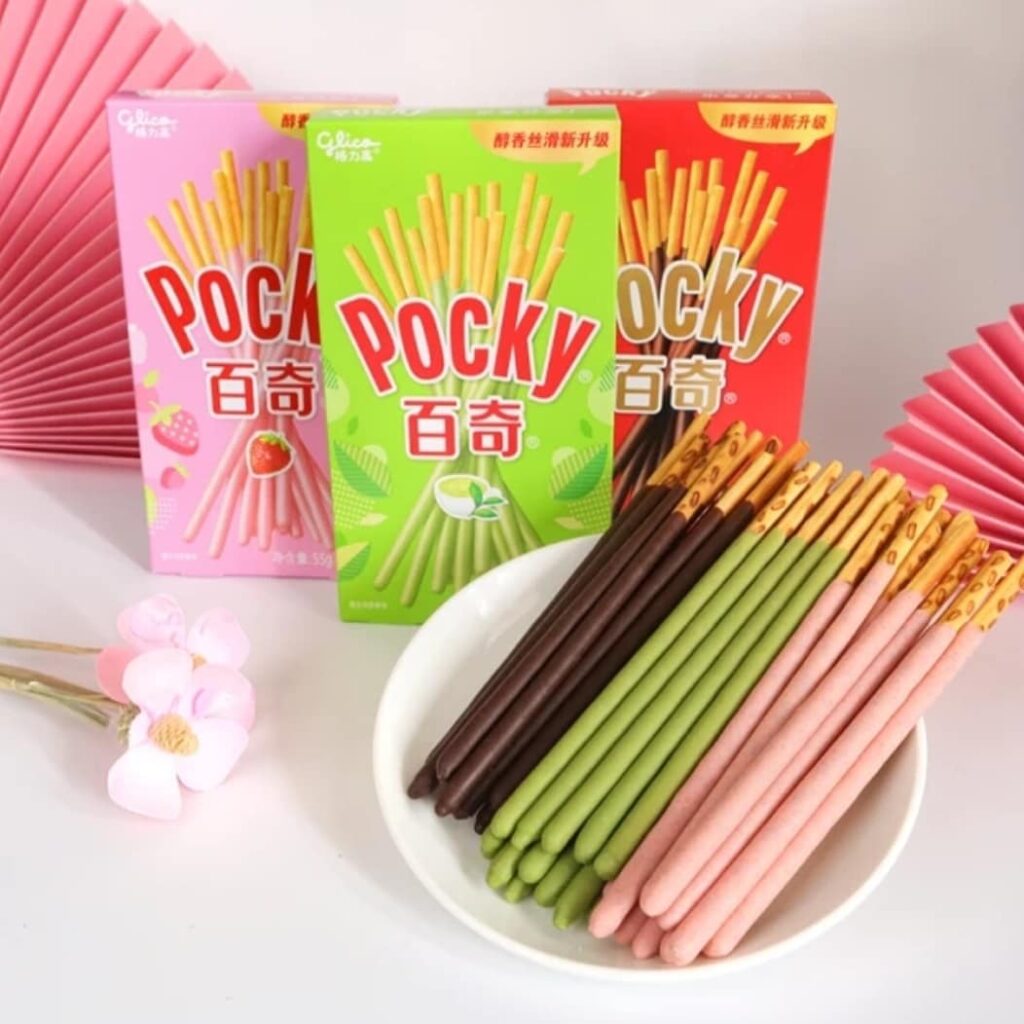
Any biscuit lover would love this Japanese candy called “Pocky“. Pockies are biscuit sticks that are covered in high-quality chocolate frosting. Its crunchy texture and amazing taste are indeed the main reasons why this candy is one of the most popular sweet snacks in Japan. People often wonder what the name “Pocky” means and whether it’s related to the taste or history of this candy. However, none of these is actually true. The name “Pocky” is related to the sound this snack makes once you taste it.
Just like most Japanese candy, Pocky comes in a lot of variations that differ from one another in shapes, styles, and flavors. Some of the most popular Pocky variations among them are banana, vanilla, strawberry, chocolate, blueberry matcha green tea, and orange flavors. Besides, grape, yūbari melon, Kobe wine, and giant mikan are some of the original Japanese Pocky flavors.
3. Apollo
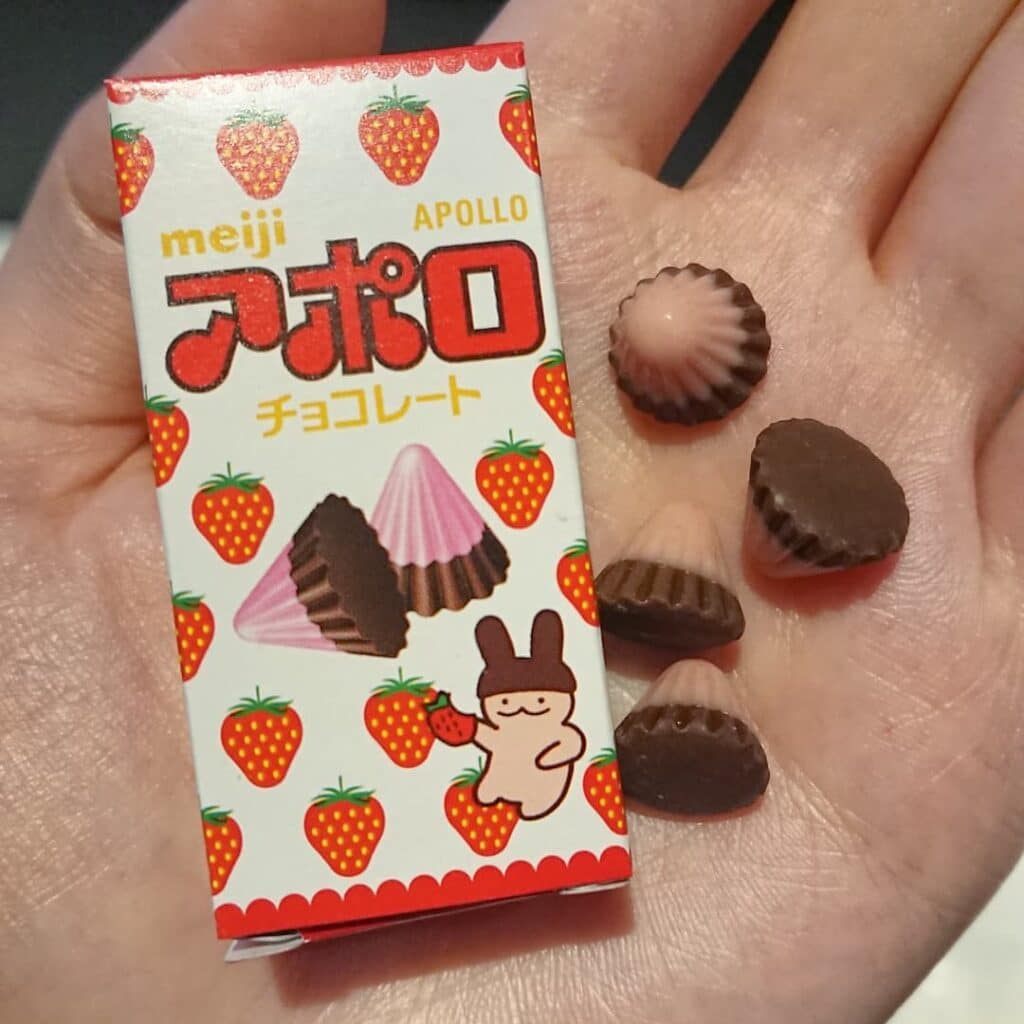
If you think that the name of the Apollo candy has something to do with space, then you are right. Like the famous Satellite Wafers and Astro Pops, the name Apollo was inspired by the Apollo 11 spacecraft. It is a popular product of Meiji, which is a famous manufacturer of Japanese candy.
Apollo is a cone-shaped chocolate treat that comes in bite-size pieces, and each piece is made with a creamy milk chocolate base with a strawberry chocolate tip. There are bite-sized Apollos as well as whole chocolate bars available.
4. Milk Candy
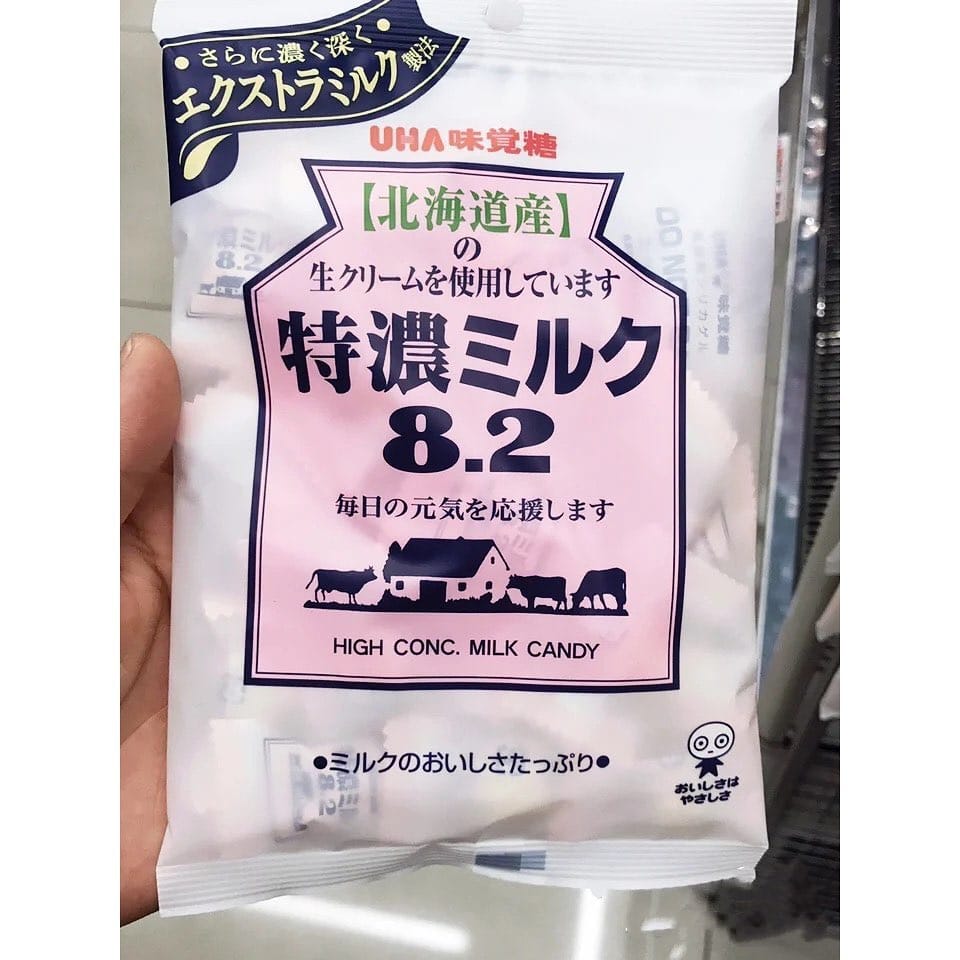
At first glance, there’s nothing unusual or extraordinary about Milk Candy. People from all over the world adore milk candies and have various types of milk chocolate among their national sweets. However, Japanese Milk Candy indeed stands out, and even more, many people think that it’s hard to find a candy like this anywhere!
Milk Candy is a popular Japanese candy that contains natural milk and chocolate without adding any artificial coloring or sweetener. No wonder this treat is one of the Japanese kids’ favorites! The candy originates from Hokkaido, where the highest quality milk is used in all of Japan. Popular Milk Candy has plenty of variations today, and Pine Ichigo Milk Candy is indeed the most popular among them. It’s a cute little pink candy ball that tastes like strawberries. Pine Ichigo candies have a hard shell outside but a soft strawberry texture in the heart.
5. Nobel Super Sour Candy
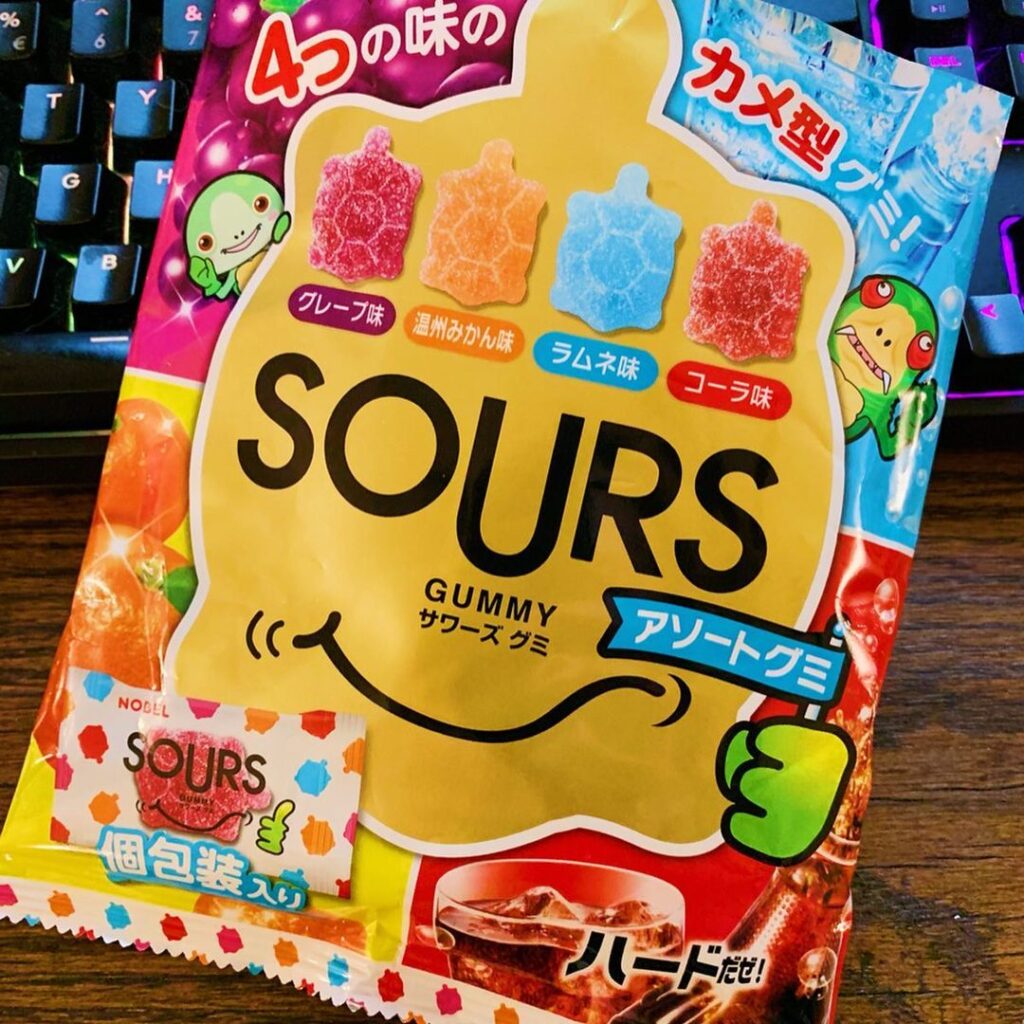
Sour candy is another Japanese signature candy. The first-ever sour candy in Japan originated from umeboshi, which is also called sour pickled plums. Surprisingly, it was as many as 1500 years ago, and back in those times, sour candy was used as a medicine in Japan. However, today it’s considered one of the most delicious treats for candy-lovers. As time went by, Japan introduced a number of sour candy flavors, including lemon, grape, and even the most famous, “suppai”.
Nobel Super Sour Candy is definitely the most popular type of sour candy nowadays in Japan. It’s a yummy hard candy that includes a super sour powder on the outside and a sweet and juicy texture on the inside. Nobel Super Lemon Candy Sour Candy is indeed the most popular variation of this candy that can be found everywhere in Japanese stores. However, there’s another famous addition that has 3 different flavors: cola, soda, and lemon at the same time and is called Nobel Super Sour Candy Package – Mixed.
6. Classic Guava Hard Candy
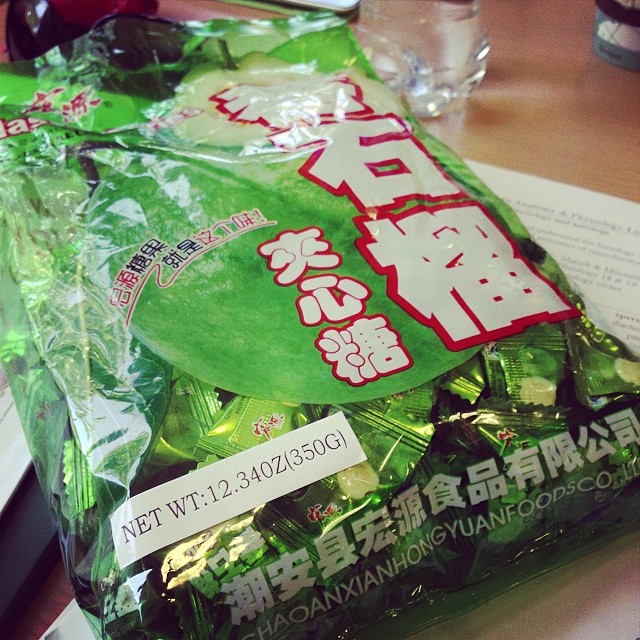
In case you didn’t know before, Japanese people adore hard candy. The Japanese alternative to hard candy is called “keta-ame” and they started producing this candy centuries ago when Portugal started bringing sugar into their country. “Kuro-ame” is a healthy variation of the common hard candy as it’s made with brown sugar. Unlike this, “shio-ame” is a slat candy and “hakka-ame” is a peppermint candy, however strange it might seem.
Nowadays, the most popular hard candy in Japan is Classic Guava Hard Candy. It’s a very sweet and tart candy that tastes exactly like guava, a common tropical candy that can be found in most tropical countries, including Japan. The classic variation of Guava Hard Candy consists of grape syrup, sugar, citric acid, guava essence, edible pigments, fruit acid, and salt.
7. Puccho Chewy Candy
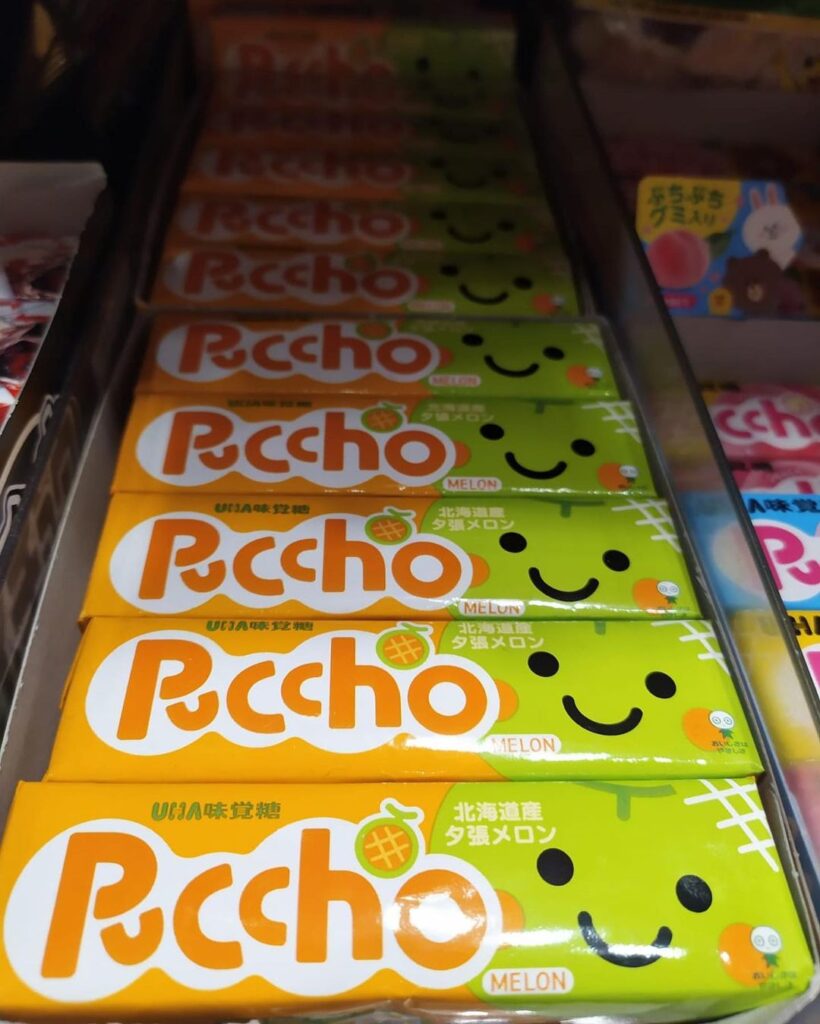
Chewy candy is a Japanese alternative to chewing gum. The first Japanese chewy candy originated in 1956 and quickly became one of the most fascinating Japanese sweets of all time. Many people think that Japanese chewy candy is almost exactly the same as traditional chewing gum. However, the difference is that chewy candies have a rubbery texture that melts in your mouth in the process of chewing the candy.
Puccho Chewy Candy is one of the most common chewy Japanese candy. It’s a tasty ramune-flavored chewy candy that includes chewy. pieces. Some of the most popular chewy candy flavors include melon, mango, strawberry, cola, and grape, but the ramune soda flavor definitely stands out. That’s exactly how Puccho tastes. The most exciting thing is that each candy has its own wrapper with Puccho mascots printed on it.
8. Kit Kat
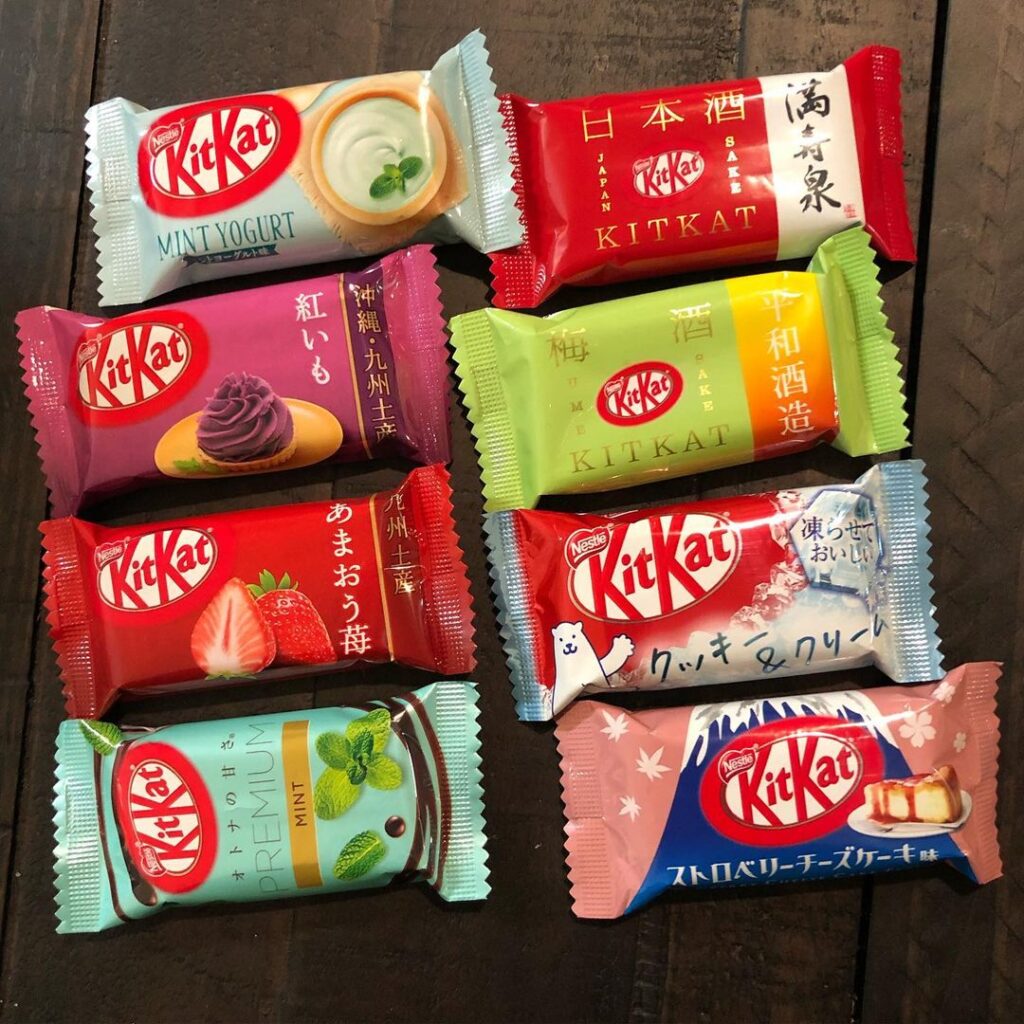
Did you know how obsessed people get in Japan when it comes to Kit Kat? In fact, Japan gets very creative when it comes to Kit Kat. Except for the classical Kit Kat candy bar, there are some unusual flavors of Japanese Kit Kats that you can only find in Japan. Some of them include Wasabi Kit Kat, Sweet Potato Kit Kat, and Deep Matcha Kit Kat. But the most popular Kit Kat variation is indeed the Japanese Kit Kat Matcha Green Tea. Japan is the only country where you can find so many varieties of a single candy bar.
Along with the above-mentioned varieties, you can also find the Sakura Kit Kat, which is probably the most popular one. It has reached almost legendary status around the world. You can feel Japanese culture in every detail of the Sakura Kit Kat, starting with the seasonal packaging and finishing with the charming pink color and fascinating flavor.
Japanese Kit Kat Flavors FAQ
What are the Japanese Kit Kat flavors?
The Japanese Kit Kat flavors are: Apple, Adzuki, Bakeable custard, Baked potato, Banana, Beni IMO, Blueberry cheesecake, Brown sugar syrup, Cafe au lait, Cantaloupe, Cappuccino, Caramel macchiato McFlurry, Cherry, Chestnut, Chocobanana, Cinnamon cookie, Citrus golden blend, Corn, Cough Drop, Creme brulee, Double cookie Edamame, European cheese, Exotic Tokyo, Fruit parfait, Ginger ale, Golden citrus, Green bean, Hojicha, Hokkaido cheese and chocolate, Hokkaido Melon with Mascarpone Cheese, Hokkaido roasted corn, Hot Japanese chili, Kinako, Kobe pudding, Koucha, Kuchidoke Kakao, Lemon cheesecake, Maple, Matcha, Melon and Cheese, Miso soup, Muscat of Alexandria, Okinawa sweet potato, Passion fruit, Pear, Pumpkin, Ramune, Raspberry passionfruit, Red potato, Rilakkuma hotcake, Rock salt, Royal Milk Tea, Sake, Sakura, Sakura matcha latte, Salt and caramel, Shikuwasa, Shinshu apple, Soy flour, Soy sauce, Strawberry, Strawberry cheesecake Sweet pudding, Tokyo Banana, Triple berry swirl, Vegetable juice, Wasabi, Watermelon, Yokohama cheesecake, Yubari melon and Yuzu.
How many Japanese Kit Kat flavors?
Japan is home to over 300 unique flavors of Kit Kats created exclusively for certain cities, regions, and seasons. The most popular package variety of Kit-Kat bars in Japan is the mini, consisting of two bite-size pieces. Typically there are about 40 different flavors of the Kit-Kat mini available at any given time.
What does Kit Kat mean in Japanese?
‘Kit Kat’ approximates to ‘Kitto Katsu‘ which is a Japanese expression meaning ‘Good luck‘. and translates literally as ‘Surely win‘. The candy has become extremely popular as a gift and candy-maker Nestle has capitalized on the craze by making hundreds of unique Kit Kat flavors but they are only available in Japan.
Why are the Japanese obsessed with Kit Kat?
Marketing campaigns for Kit Kats in Japan have benefited greatly from the coincidental false cognate with “Kitto Katsu“, a phrase meaning “Surely win” in Japanese. Research has shown that the brand is strongly correlated to good luck charms, particularly among school children ahead of their exams.
Why is Kit Kat different in Japan?
Kit Kat was first introduced to Japan in 1973 when the British confectioner Rowntree’s made an agreement with a Japanese confectioner and restaurant owner Fujiya. The business model was created after the company found there was a problem in convenience stores in Japan, where they often rotated items and flavors off of shelves.
9. Konpeitō
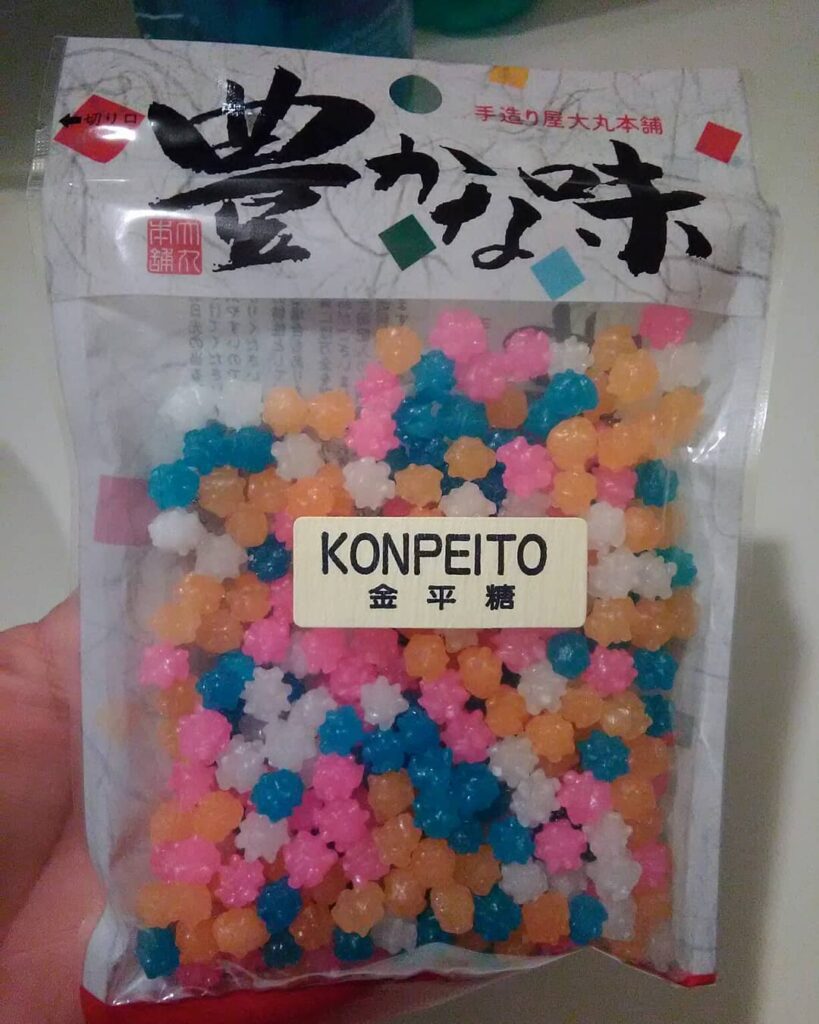
Konpeitō is a traditional Japanese candy that was introduced in 1569, by Portuguese missionaries. This star-shaped hard candy comes in a variety of colors and flavors and will definitely remind you of Jolly Ranchers, which are also famous for being one of the most popular sugar candies.
Konpeitō can be found in the Japan Ministry of Defense’s emergency and military food ratios. Similar to M&Ms being used in soldiers’ rations, Konpeito is also very high in calories and helps with producing saliva, which is important for eating dry food.
If you are a hard candy enthusiast and like to suck them all day, try Konpeito, one of the oldest and most popular Japanese candy.
10. Super Lemon Candy
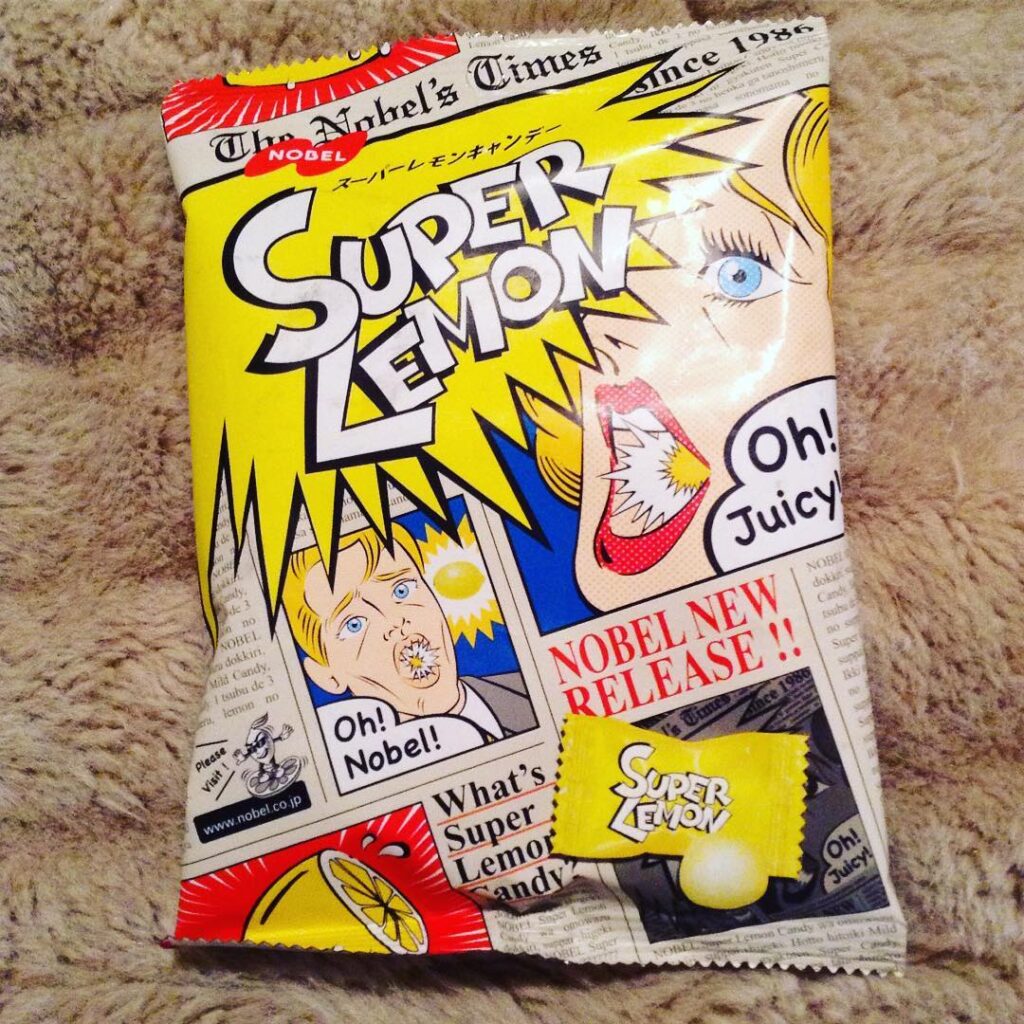
Super Lemon Candy is considered another popular Japanese hard candy. It is basically like Lemonheads, which you probably remember from your childhood. The Super Lemon Candy was introduced in 1985 by Nobel and quickly became very popular for its usual taste. Like Lemonheads, prepare to shock your mouth with a flavor explosion when eating Super Lemon Candy. It is extremely sour on the outside, but as you reach the center, a sweet taste comes to your mouth.
Super Lemon Candy comes in rather interesting packaging, featuring comic artwork, which makes it even more recognizable. If you are up for challenging your taste receptors and enjoy reading comics, this sweet and sour Japanese candy will not leave you disappointed.
11. Black Thunder
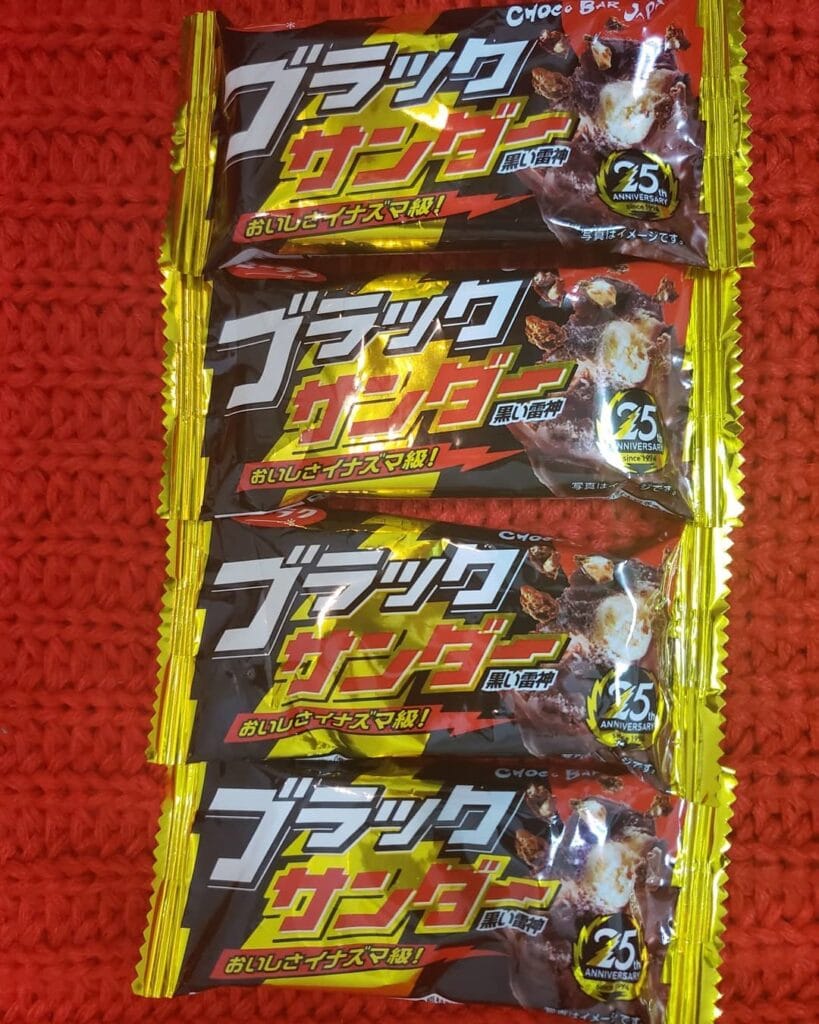
Black Thunder is a chocolate bar made by Yuraku Confectionery Company. It is a chocolate-covered cocoa cookie with Japanese-style rice puffs inside. The name of this famous Japanese candy bar was inspired by the Japanese God of Thunder.
Black Thunder bars were first created for university students in the Kanto Region. Starting from word-of-mouth recommendations, the chocolate bar’s popularity increased quickly. It even sponsored the Men’s Gymnastics Team in the 2008 Summer Olympics, which made the brand vastly recognizable.
Today, the Black Thunder is advertised as having “a delicious taste in a flash of lightning”. If you love the famous Crunch bar and enjoy chocolate cookie flavor, then put them together and you’ll get a delicious Black Thunder.
12. Ramune Candy
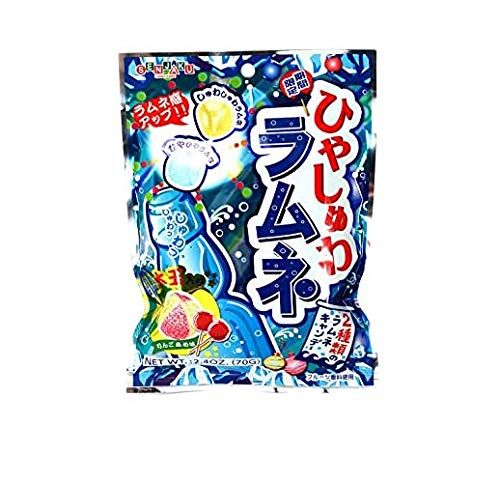
Ramune is a well-known citrus-flavored carbonated beverage in Japan. The beverage is often offered in a glass bottle with a marble-sealed lid. The soda will then break through and bubble up once the marble is taken out of the bottle’s opening. These fizzy Japanese candies are a common kind in Japan and taste much like the country’s iconic citrus-flavored Ramune soda.
The Japanese lemon-lime soft drink dates back to 1876 and is the inspiration for these Ramune candies. It is important to note that Ramune is a broad category of confectionery items with a wide range of products now offered, not simply a particular brand. Basically, it refers to candy with a “soda flavor.” Ramune candies have been created by many different firms throughout the years, but Morinaga’s are the most well-known since they come in a charming plastic container that resembles the original glass Ramune bottles.
13. Meiji Almond Chocolate Snack
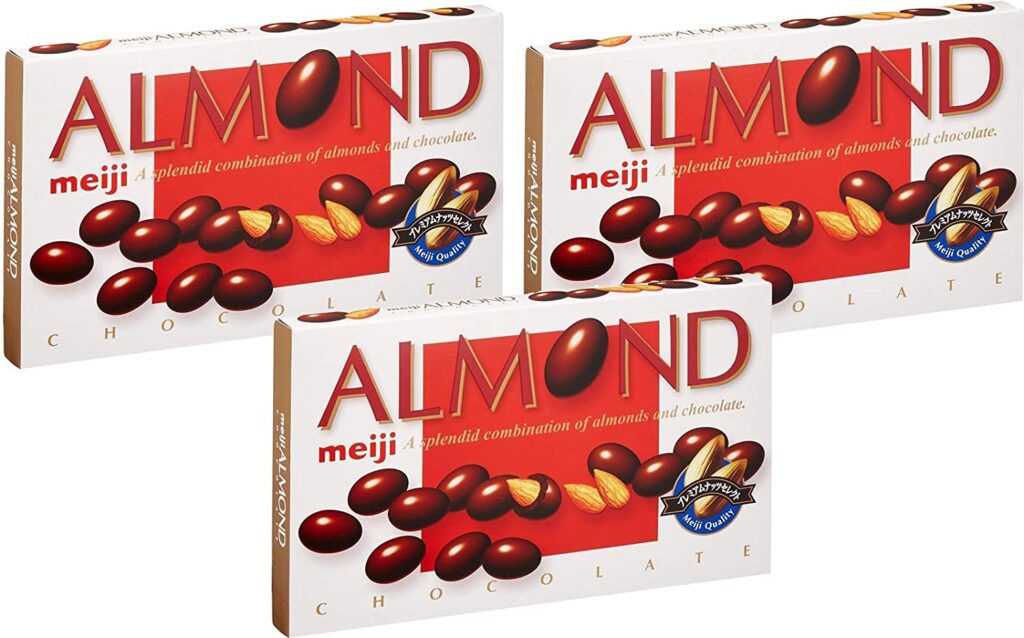
These chocolate-covered almonds are a top-selling snack from Meiji, one of Japan’s top chocolate producers, and they’re great for sharing with friends and family.
To produce this Japanese candy, crispy bits of California-grown almonds, imported specifically for Meiji, are covered with sweet, buttery chocolate. Prior to being roasted and wrapped with a chocolate coating, the Meiji production team only chooses the finest almonds. The almonds are polished to give them a glossy look after being covered in chocolate, and then they are packed and distributed.
14. Meiji Kaju Gummy Candy
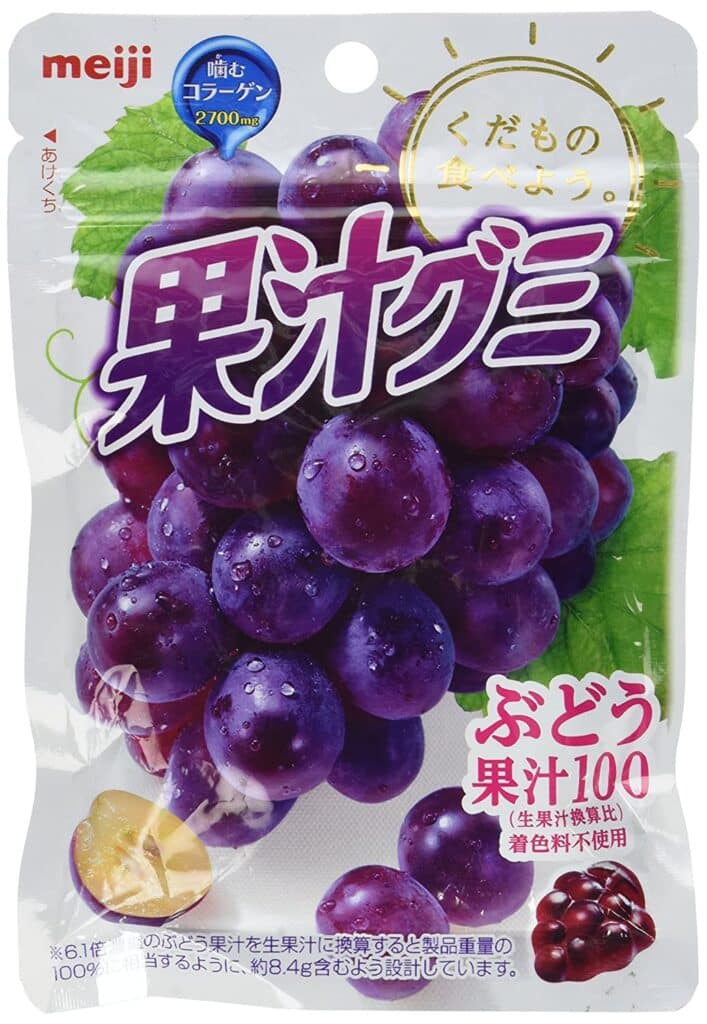
Meiji Seika Confectionary originally offered the Meiji Kaju Gummy more than three decades ago, namely in 1988. The name “Meiji Kaju Gummy” is derived from the Japanese term “kaju,” which means fruit juice. This product contains fruit juice and is available in a wide range of tastes. The specific gummy candy line originally only came in grape flavor, but today it also comes in strawberry, tangerine, peach, kiwi, acerola cherry, lemon peel, muscat, and lime.
The Meiji Kaju Gummy guarantees that any flavor category you choose will be loaded to the brim with the genuinely rich flavor of the fruit. Manufacturers claim that fruit juice extract, not synthetic coloring, is what gives each candy its color.
The Meiji Kaju Gummy was a top seller across a number of confectionery categories. This is because each pack of this Japanese candy includes 2600 mg of collagen, which gives it a large collagen boost in addition to the candy’s powerful taste.
The outside of this candy is tough and chewy. But as soon as you bite into it, a taste explosion greets you, and the longer you chew it, the more delicious it becomes. Overall, the product tastes much like the juicy, fruity gummy products one would anticipate, yet unlike others, it is not too sweet.
15. Fujiya Milky Candy
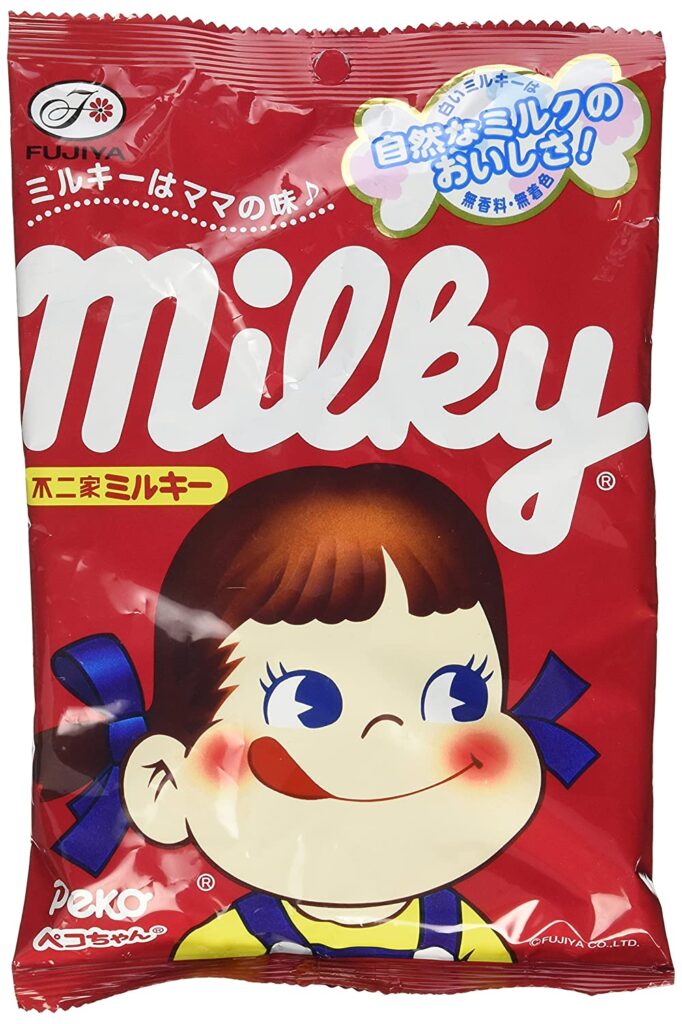
Fujiya Milky Candy is a well-known Japanese candy snack with a more than 70-year history. They are creamy, milky, chewy candies manufactured with quality Japanese ingredients, including condensed milk from Hokkaido and natural spring water close to Mt. Fuji.
The candy has been distributed in Japan since 1951, and its brightly nostalgic packaging still includes Peko-chan, Fujiya’s official mascot, who is easily identifiable by her adorable pigtails and cheery countenance.
Although not excessively sweet, Fujiya Milky really comes with a milky flavor. This Japanese candy feels fairly firm when you first put it in your mouth. However, the sweet ball eventually softens and dissolves. Starch syrup, vegetable oil, sugar (johakuto), sweetened condensed milk, fresh cream, salt, milk, and an emulsifier are the main ingredients of Fujiya Milky candies.
16. Matcha Green Tea Raw Chocolate
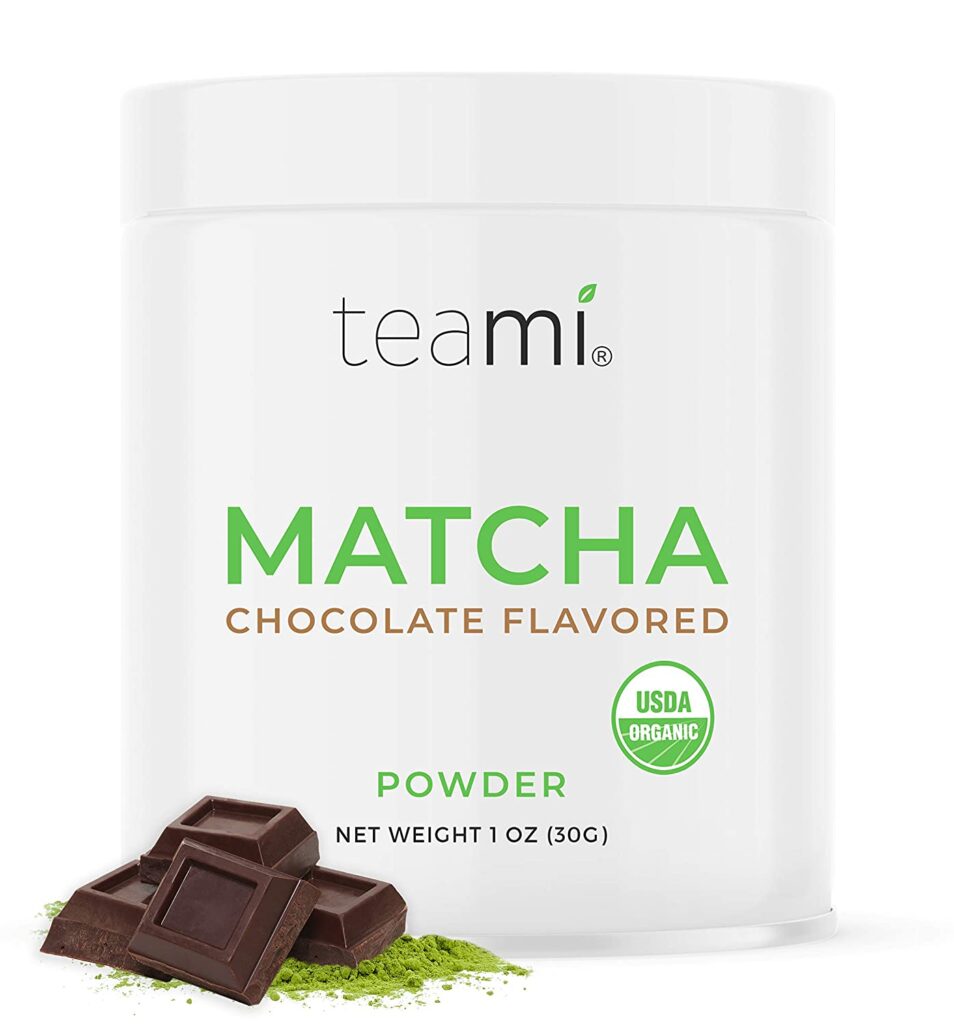
Nama (raw) chocolate is used to make the very first matcha confection and amazing Japanese candy. So, it is one of the greatest and tastiest inventions of the Itohkyemon people. A gorgeous green matcha powder that was specifically chosen and ground for this product is placed on a brick-shaped piece of raw white chocolate.
Matcha’s flavor and bitterness blend beautifully with the rich, less sweet white chocolate without being overpowered. Every item is hand-wrapped in washi (Japanese paper), making it ideal for gifts. While golden washi exudes elegance, dark green washi symbolizes a rich matcha flavor.
Each piece of chocolate may be easily consumed with the help of the connected Kuromoji, which is a wooden pick used for picking up and eating the Japanese delicacy. A Japanese tea shop called Itohkyuemon was founded in Uji, Kyoto, in 1832, and it is known for its green tea and matcha pastries.
17. Tirol Chocolate
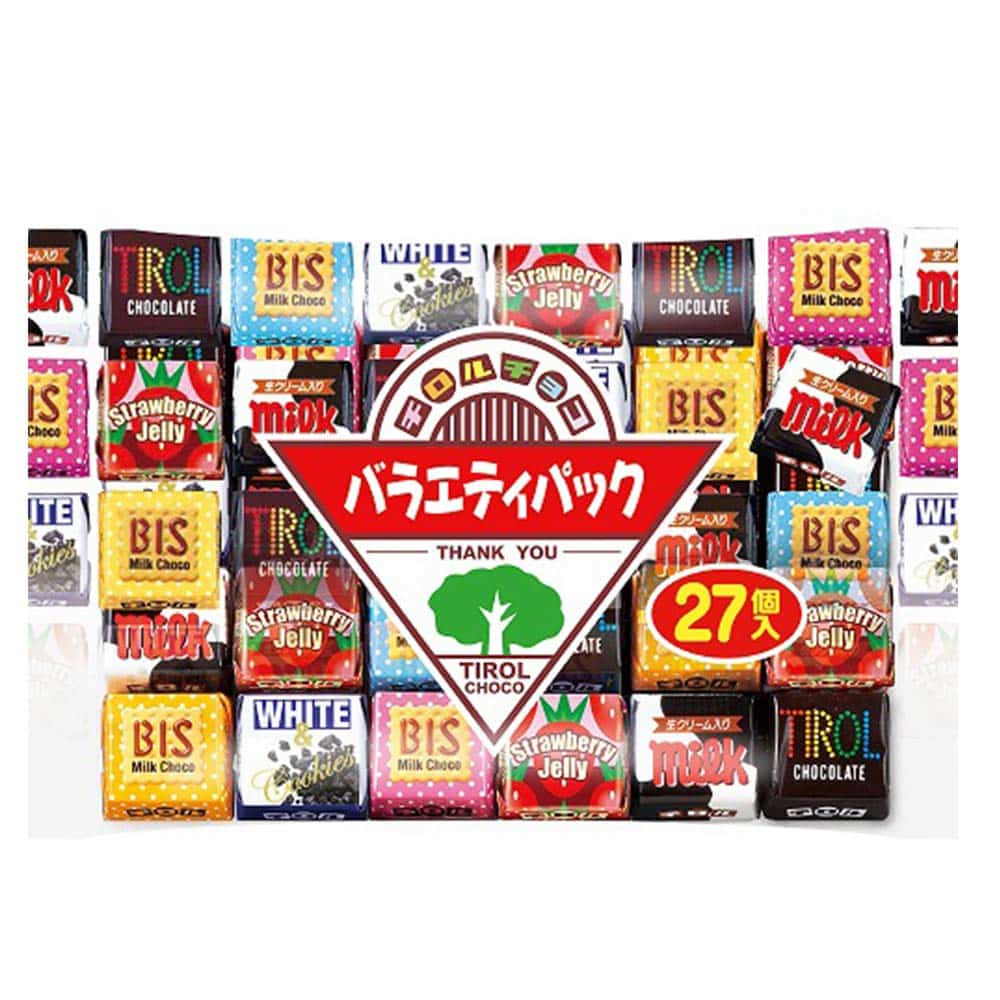
In late 1962, a corporate division called Tirol Choco began creating mouthwatering Japanese candy. They started by making little chocolate cube sweets that were packaged in cheerful, adorable, and multicolored ways that quickly became a hit with young Japanese children. Having expanded much beyond their original plans, Tirol Chocolate has now made it their goal to spread happiness throughout Asia with their delectable delicacies.
The tagline of Tirol Choco, “One Tirol, One Smile, One Asia,” aptly captures the company’s single focus. Tirol Choco’s numerous varieties and individually wrapped small chocolate bars are well known.
The firm makes it a point to add hundreds of new tastes or cycle through different combinations each year, so its selection of flavors never becomes boring. In fact, Tirol Choco reportedly introduces more than 20 unique varieties each year. This almost ensures that buyers won’t run out of alternatives since new types continue to appear regularly.
18. Caplico
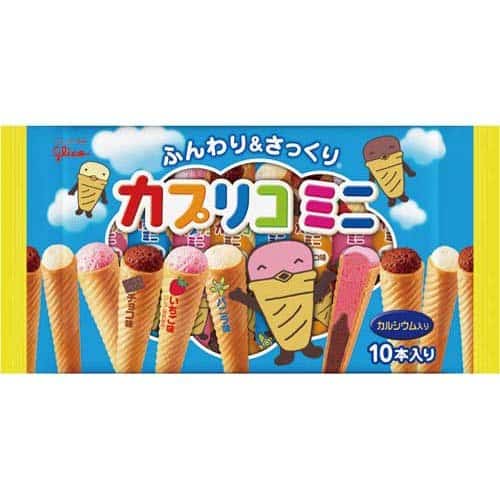
Even though there aren’t many things that can compare to the joy that an ice cream snack can provide, especially on sweltering summer days, some people like their ice cream without the sting of the ice. It is to Japan’s credit that they have found a way to allow people to experience the same enjoyment of eating an ice cream cone without the necessity for the dessert to be cold.
Caplico is a well-known and enduring Japanese candy that is still available today and is likely to evoke nostalgia in the Japanese population. It’s a delightful bubble chocolate delicacy that was specifically designed to imitate ice cream by the Japanese food firm Ezaki Glico. These sweet and airy Japanese sweets are often served on top of a wafer cone, however, some may come in tiny bite-sized variants in the form of hearts, stars, or little sticks.
The Caplico brand of chocolate treats quickly became popular among Japanese kids thanks to its original idea, adorable design, and delectable filling.
19. Ichigo Daifuku
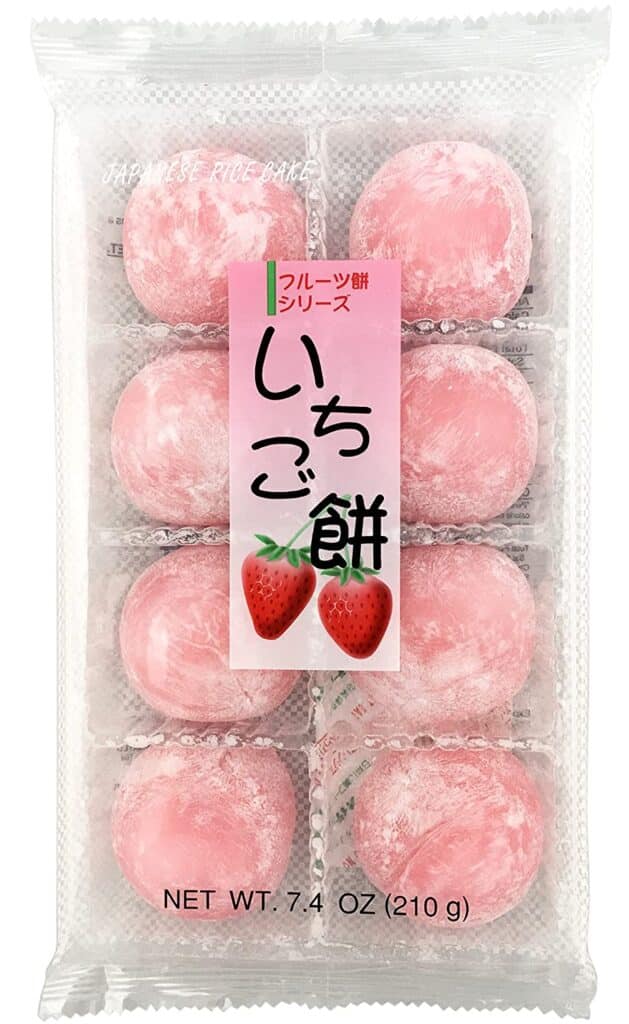
One of the most intriguing variations of the traditional Japanese candy known as daifuku is Ichigo daifuku. Each type of daifuku has a chewy mochi shell composed of pounded glutinous rice and a variety of fillings that are concealed inside the shell. The word “Daifuku” translates as “bringer of good luck.“
Since Ichigo employs entire strawberries as fillings, it distinguishes itself as one of the most distinctive varieties. The most common style involves first wrapping the strawberry in a thin coating of delicious red bean paste, or anko in Japanese, and then in a layer of tender white mochi.
In more recent varieties, a white bean paste may be substituted for the anko, and the mochi shell may occasionally be painted a light red to resemble a strawberry. A seasonal sweet, Ichigo daifuku is often eaten in the spring when strawberries are in season.
When this delicious delicacy is sliced, a stunning and eye-catching mix of scarlet berries, dark anko paste, and a light coating of mochi are revealed. Despite being a common Japanese candy, Ichigo daifuku only started to gain popularity in the 1980s. The original Ichigo was allegedly invented by several well-known Japanese candy stores, but the actual history is uncertain. Like other daifuku variations, Ichigo is usually best when it is served right away.
20. Meika Hiyoko
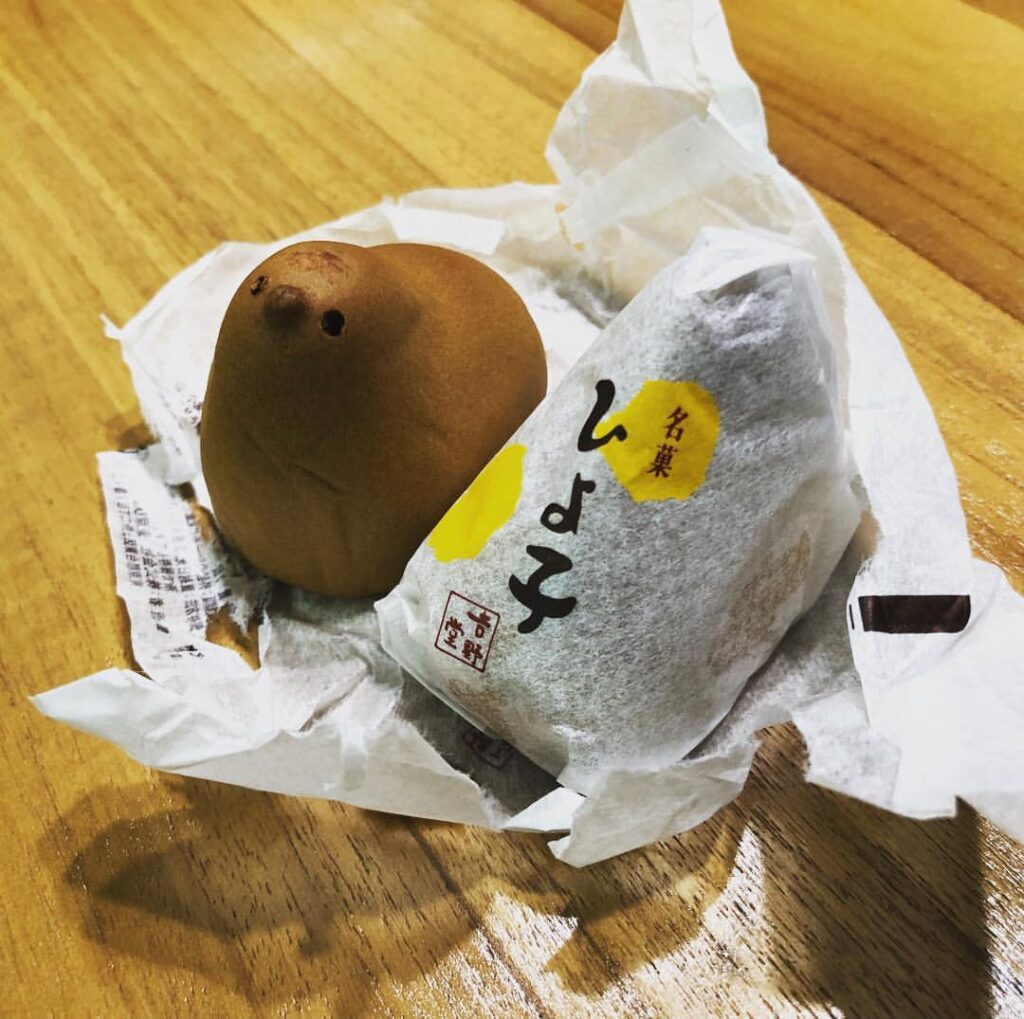
Cute chicken Meika Hiyoko, a Japanese candy, is well-known in Fukuoka prefecture. Shigeru Ishizaka had a strong connection to sweets and believed that they not only expressed our lives but also our genuine emotions. He wanted to create something that everyone would adore.
According to the legend, the inspiration for this amazing Japanese candy came to him in a dream while he was sleeping. He created this adorable delicacy for the first time in 1912, which is why it’s often considered vintage Japanese candy. He aspires to build a friendlier and livelier society through Hiyoko.
The buns sold out almost immediately after the manufacturing process started. Hiyoko became a traditional Fukuoka delicacy that locals bought as gifts for individuals in other regions of the country soon after World War II when consumers lined up in front of a store the business established and grew in the city. The adorable Hiyoko delight, which began in Chikuho Iizuka and has a bean jam-filled “yolk,” spread to Fukuoka, Tokyo, and other cities before becoming a beloved and popular treat throughout the country.
21. Umeboshi Plum Candy
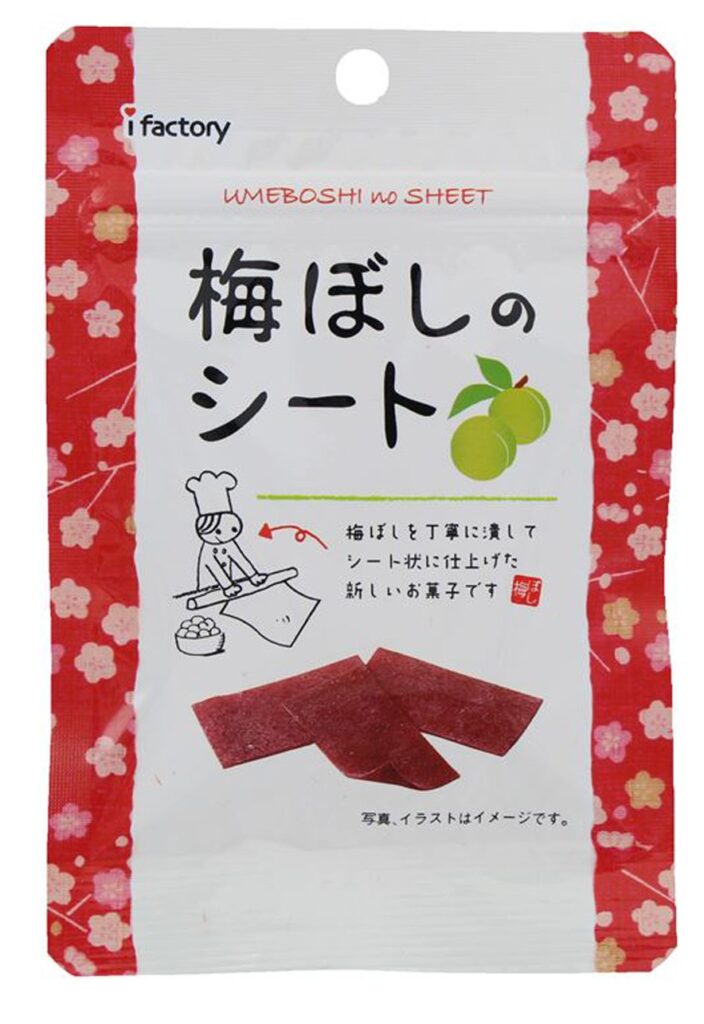
Individually wrapped Umeboshi plum Japanese candy has the same quantity of ume plum juice as real fruit does. As a result, they are loaded with umami flavor. Ume plums are a crucial component of Japanese food and confections. One dish that symbolizes Japan is “Umeboshi,” or pickled Ume plums. The Ume plum-based Japanese confections include Nama Ume Ame, Umeboshi no Sheet, Hoshiume, and Otoko Ume Gummy, among many more.
Try these tart umeboshi hard candies if you want a treat that is distinctly Japanese. Umeboshi, a pickled plum dish from Japan, has a powerful taste. This Japanese candy comes with a very unique taste that combines saltiness, acidity, and sourness due to its high citric acid concentration.
Hard To Find Candy in Japan
Believe it or not, some candies are very hard to find in Japan. Even though the country produces huge amounts of traditional sweets as well as international ones, there are still some very popular and famous treats that you can’t find in Japan.
Surprisingly, one of America’s most favorite snacks, Pop Tarts, is almost impossible to find in Japan. Followed by Fruit Roll-Ups, the list does not end here. You can find some basic candy bars like Mars and Hershey’s there, but other less well-known ones like Charleston Chew are not on the market. And last but not least, don’t get your hopes up if you want to drink your favorite Root Beer while in Japan, because you’ll be disappointed when you can’t find it in any supermarket.
Bottom Line
Japan has been known for its rich and fascinating history all over the world. When you go there, you dive into the culture that has been created since ancient times. Like everything else in the country, Japanese candy has become a valuable and very important part of the country’s history.
Japan is probably the number one country that gives confectionery manufacturing so much importance. Confectioners care a lot about the candy-making process. The taste and the visuals are all in their hands to create Japanese candy masterpieces.
Sweet treats play an important role in Japanese culture. They take their roots from one of the most important ceremonies in Japan, tea drinking. It is unimaginable to hold weddings, special gatherings, or ceremonies without offering candy.
Japan gets very creative when it comes to candy manufacturing. It is not unusual to see flower and leaf shapes in sweets, as well as varieties of flavors, sometimes rather unusual ones. There are some candies that you can only get in Japan that are definitely worth trying if you have a sweet tooth.
Have you tried any traditional Japanese candy? If yes, is there any of it on our list? Please share which one is your favorite.

Nato is a content writer and researcher with a background in psychology. She’s passionate about writing about the candy industry and exploring the cultural significance of sweets and treats. She believes that the stories behind our favorite snacks can reveal a great deal about our values.
Please leave a review or any memories of this snack in the comments below. Thank you!
Click here for a full A-Z list of Snacks and Candy
